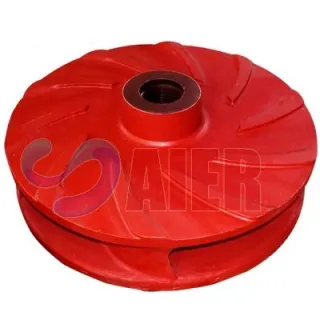Oct . 30, 2024 13:53 Back to list
slurry pump impeller
Understanding the Slurry Pump Impeller Key Features and Functions
Slurry pumps are crucial components in various industries, particularly in mining, mineral processing, and wastewater management. One of the most critical parts of a slurry pump is the impeller. This article delves into the importance, design, and functionality of the slurry pump impeller.
The impeller is essentially the heart of a slurry pump, responsible for the transportation of abrasive and viscous materials. Unlike standard pumps that handle clean liquids, slurry pumps are designed to cope with mixtures containing solids, which can be larger and more abrasive. The design of the impeller must therefore accommodate these unique challenges.
Design Considerations
The impeller of a slurry pump is typically made from high-chrome alloys or rubber compounds, depending on the application and the nature of the slurry being pumped. High-chrome alloys are resistant to wear and provide longevity when pumping abrasive materials. On the other hand, rubber impellers offer flexibility and resilience, which are beneficial in applications involving corrosive materials.
The impeller’s geometry is also crucial. It often features a wide channel that allows for the easy passage of large particles, minimizing the risk of blockage. The design must balance efficiency and durability, as higher efficiencies often result in increased wear. For this reason, manufacturers conduct extensive research to create impellers with an optimal shape, size, and material composition.
slurry pump impeller

Functionality
The primary function of the impeller is to transfer mechanical energy from the motor to the slurry. As the impeller rotates, it creates a centrifugal force that moves the slurry from the inlet to the discharge. This movement is critical in maintaining the flow and preventing settling of solids within the system.
Another essential function of the impeller is to generate pressure. When the impeller spins, it not only propels the slurry forward but also increases its pressure, making it capable of overcoming the resistance of pipes and fittings in the system. This is particularly important in systems where the slurry must be transported over long distances or must reach considerable heights.
Maintenance and Care
To ensure optimal performance of slurry pump impellers, regular maintenance is essential. Monitoring for wear and tear, especially in high-abrasion environments, can significantly extend the life of the impeller. Replacing worn impellers promptly is crucial to maintaining efficiency and preventing more severe damage to the pump.
In conclusion, the impeller is a pivotal component in slurry pumps, with its design and functionality directly impacting the effectiveness of the pumping system. By understanding the intricacies of slurry pump impellers— from materials and design to their operational roles—industry professionals can enhance performance, longevity, and efficiency in their pumping applications. Whether in mining, waste treatment, or industrial processes, the importance of a well-designed impeller cannot be overstated.
-
Top Submersible Pump Companies High Quality Manufacturers & Suppliers in China
NewsJul.08,2025
-
High Quality Seal for 5 Inch Dredge Pump Reliable China Manufacturer & Supplier
NewsJul.08,2025
-
High-Efficiency Slurry Sand Pump from Leading China Manufacturer – Durable & Reliable Solutions
NewsJul.07,2025
-
High-Quality Slurry Pump Made in China Durable Steel Mill Slurry Pump & Parts
NewsJul.07,2025
-
High Quality Excavator Dredge Pump Manufacturer & Suppliers from China – Reliable, Durable, Efficient Solutions
NewsJul.07,2025
-
Wholesale Slurry Pump Closed Impeller Supplier High Efficiency China Slurry Pump Closed Impeller
NewsJul.06,2025
